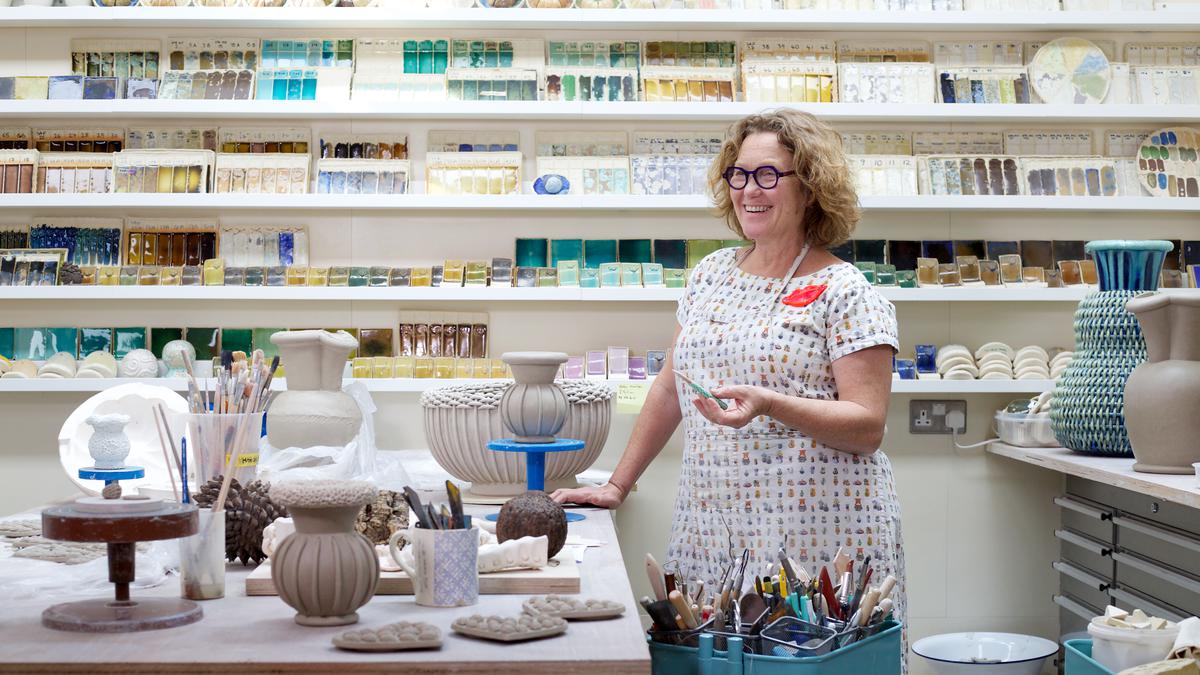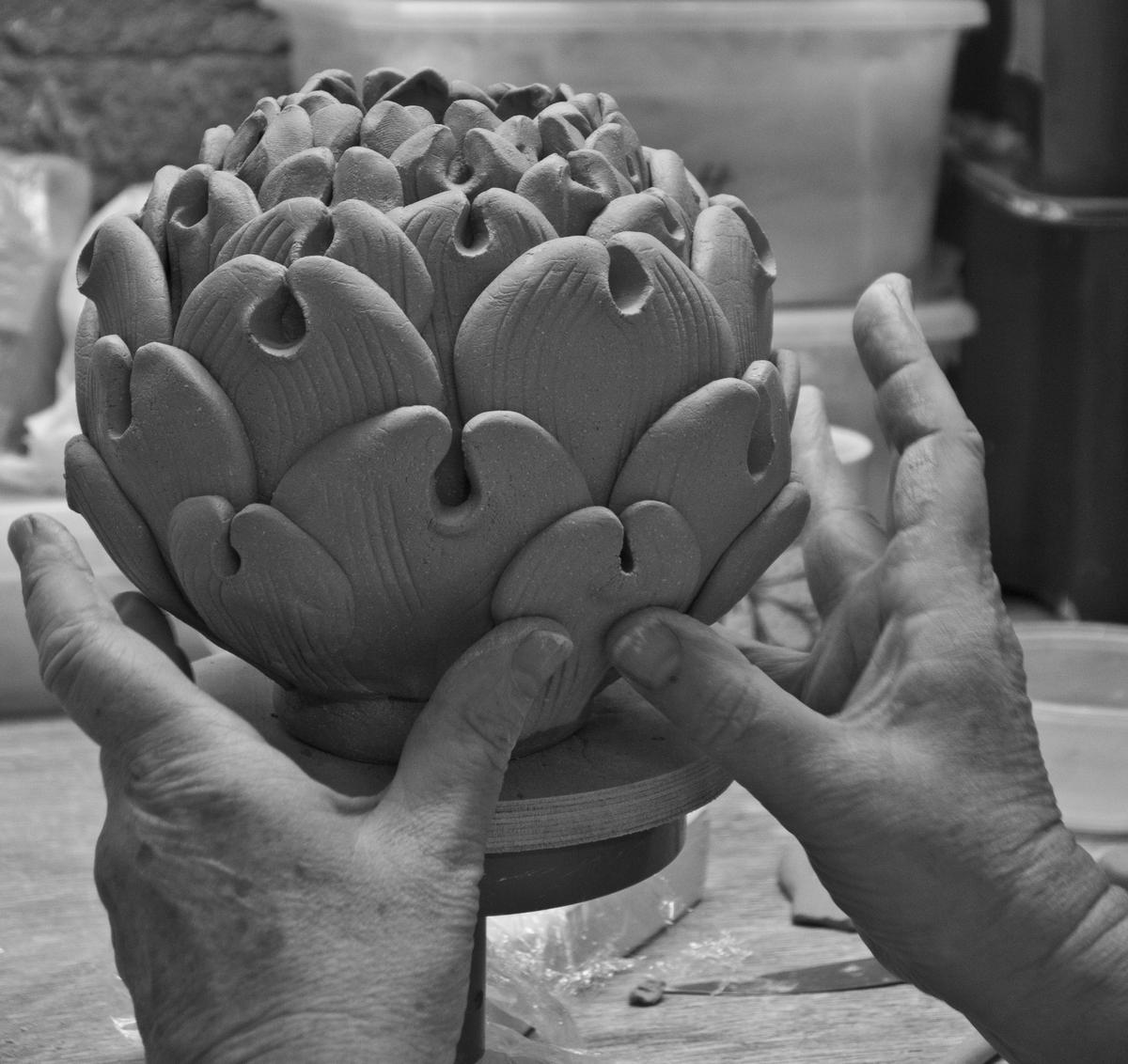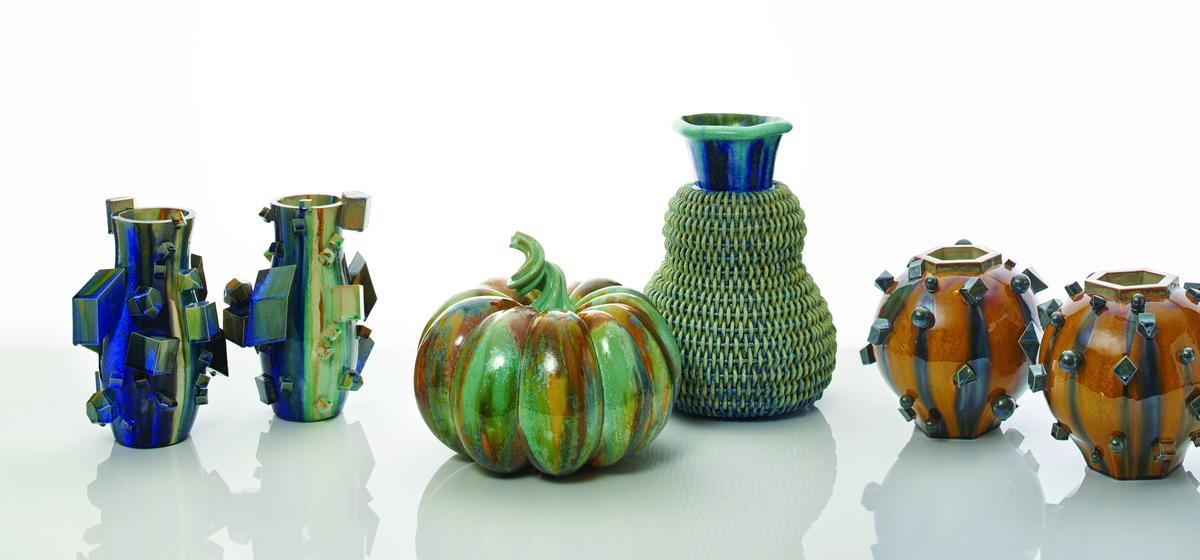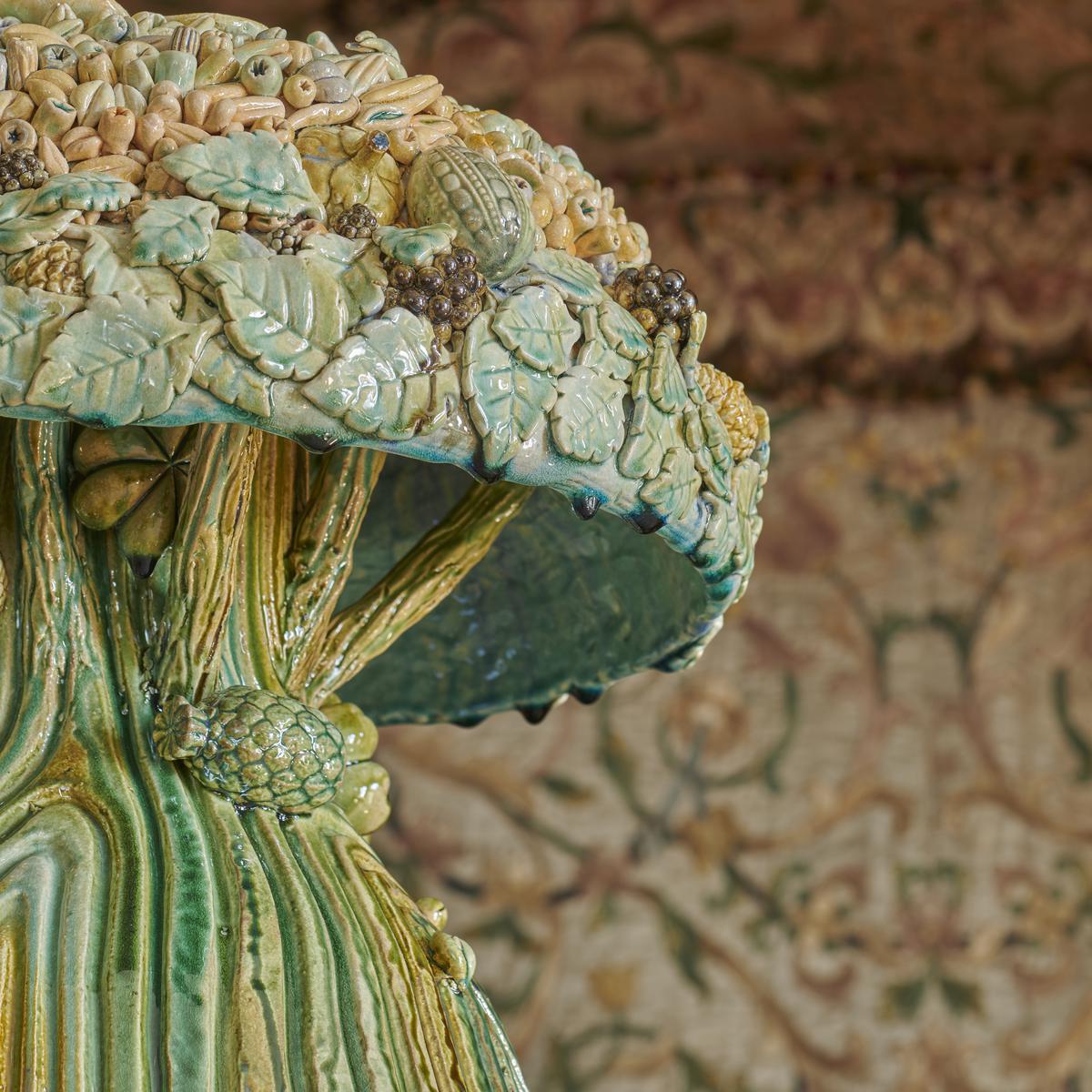
Studio pottery in India has its whole future ahead of it: Kate Malone

Kate Malone in her London studio
| Photo Credit: Dan Fontanelli
The year was 1986. British potter Kate Malone, then 24, had flown down to India with her husband to meet their friends — visual artist Ravindra Reddy, and sculptors Trupti Patel and Dhruva Mistry in Ahmedabad, with whom they had forged a deep friendship during their time at the Royal College of London.
The India visit was also to catch a glimpse of the country’s rich pottery tradition. A desire that had them heading to Goa, with blue Lonely Planets as their guide and the murmurings about a ferry that would take them to Panjim. “I remember a massive Parle-G billboard and these porters in red shirts that grabbed our luggage. We jumped on the deck of the ferry, and with chickens and goats and people crammed around us, it was really the most memorable and raw time,” she recalls.
It was a sharp contrast to her 2018 visit, to be part of India’s first ceramics triennale. “It was a fascinating experience,” she says, adding that it was the year Indian pottery had its aha moment because it was the first time that the art community had moved away from pottery as just an extension of clay to something more sculptural.

Malone sculpting an artichoke

A selection of Malone’s works

The Singing Ringing Tree (2021)
Intelligence of the artist
“If you look at the history of studio pottery in England, in the early 1950s, Bernard Leach [the father of British pottery] went to Japan and came back with Shōji Hamada and they started studio pottery 70 years ago, which led to evolution over the years,” she says. “In India, studio pottery is relatively new and limited to the last few decades, which means that here you have the whole future ahead of you. So, in Indian studio pottery, the intelligence of the artist and the spirituality of India’s history is a cocktail that is waiting to erupt.”
Pottery students at Clay Fingers in Thrissur, Kerala
| Photo Credit:
Aazhi Archives / Mohamed A.
Malone conducting a workshop at Clay Fingers
| Photo Credit:
Suresh Subramanian
The way she sees it, people need to be more aware of the intelligence of studio potters in India. She hopes that the pandemic has made people care about the critical importance of collectibles and ceramics that go beyond functionality. Out of all the potters at work today, Malone is most impressed by the environmentally responsive, vividly imagined and quirky approach of artist Madhvi Subrahmanian who challenges the possibilities of clay.
Material memory
Since the 1980s, Malone has been to India almost 30 times. Although she does not claim to be an expert in the evolution of studio pottery in India, she is pleasantly surprised at the accessibility of materials now.
When the studio Clay Fingers from Thrissur in Kerala reached out to her to do a workshop in glazing a few months ago, Malone had declined initially, assuming that they couldn’t possibly have access to the materials needed. In her understanding, India didn’t really have a history of glazing because it has a history of terracotta and fired ceramics. But she changed her mind when they sourced everything she needed.
Kate Malone at Clay Fingers
| Photo Credit:
Suresh Subramanian
With students at Clay Fingers
| Photo Credit:
Suresh Subramanian
At the Clay Fingers workshop
| Photo Credit:
Aazhi Archives / Mohamed A.
“They managed to get such obscure materials needed for glazing and students took the bus and flew in from all parts of India,” she says. “So, while demand and supply is important in the context of materials needed, you have examples such as the supplier Clay Station in Bengaluru that has helped spawned more than 50 studio potters in the past eight years. These studios have then gone on to also function as pottery schools.”
Stay connected with us on social media platform for instant update click here to join our Twitter, & Facebook
We are now on Telegram. Click here to join our channel (@TechiUpdate) and stay updated with the latest Technology headlines.
For all the latest Entertainment News Click Here
For the latest news and updates, follow us on Google News.

